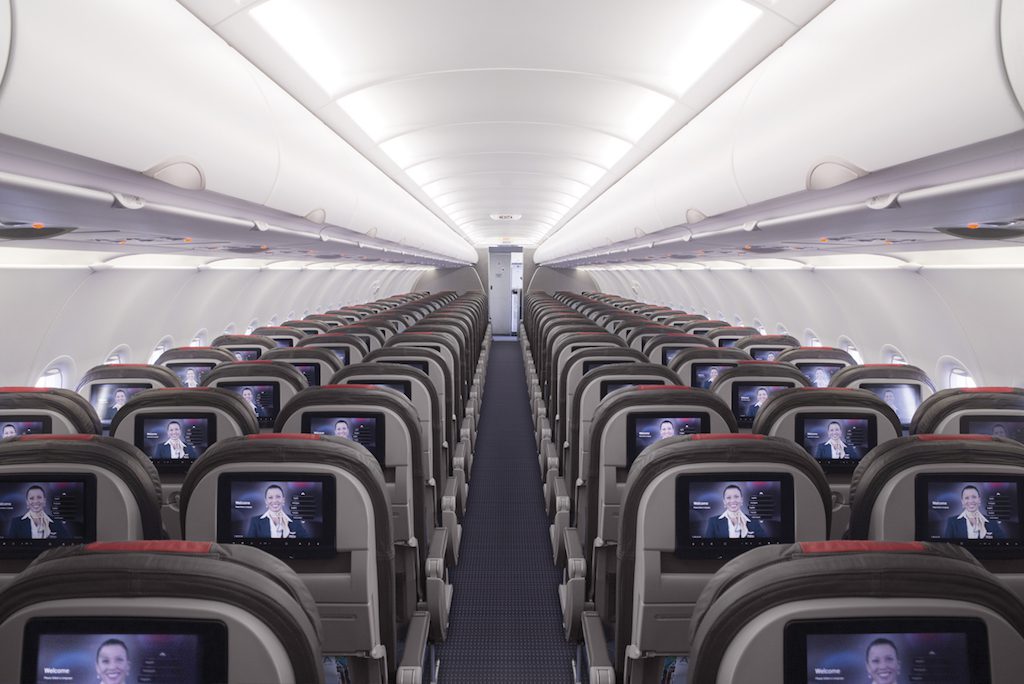Skift Take
Will Gogo make it as a stand-alone company? It still does not look promising. It's odd because customers want in-flight Wi-Fi. But so far Gogo hasn't figured out how to do it and make a profit.
As Delta Air Lines has increasingly cozied up to Gogo, its primary Wi-Fi provider, American Airlines has taken a different approach, removing the company’s technology from hundreds of aircraft, and changing the model for how it pays for Gogo’s services.
American’s tactics have hurt Gogo’s results, Gogo’s top executives said Tuesday on a third-quarter earnings call. But they assured investors the company, which has had some fiscal trouble in the past year and replaced its CEO in March, would be fine.
American remains a significant Gogo customer, but the airline moved two years ago to use other providers, including Gogo’s chief competitor, ViaSat. The airline exercised a clause in its contract allowing it to dump Gogo if it found a competitor with a materially better platform, or what Gogo CEO Oakleigh Thorne called a “shiny new product clause.”
After some contentious back-and-forth, and a short-lived lawsuit, American dropped Gogo from 550 aircraft, but agreed to retain it for about 140 other jets, which are getting the company’s newest satellite offering.
That new contract, Thorne said Tuesday, is not friendly to Gogo. It was negotiated, Thorne said, while Gogo sought to issue a more than $500 million bond offering with a 12 percent interest rate. It pulled the offering at the last minute because of uncertainty with the American contract.
“The contract with them was done under a lot of duress in the middle of 2016,” Thorne said. “In that period, the company agreed to a pre-determined pricing structure for airline-directed with American, and it gave American the right to trigger that whenever they wanted. American decided to trigger it on January 1 of this year. That has a pretty had a pretty negative effect on revenue.”
Airline Directed Model
That airline-directed model is a little unusual. Historically, Gogo has managed the onboard Wi-Fi process, offering the service, setting the prices, and receiving money for the service when passengers pay. Gogo would then send a check to the airline for its share.
With airline-directed, American buys the service from Gogo and then markets and sells it to passengers as it wants. Other airlines eventually eventually switch to that model, but none has as sweet of a deal as American, Thorne said.
“No other airline out there today has that unilateral right, so that I view as an unusual circumstance, and one that won’t repeat,” he said. “We do have the obligation with other airlines going to airline-directed in good-faith and we would obviously do so. But we wouldn’t be forced to do something that was extremely negative for us under current contract terms.”
Because of the difficultly with the American contract, executives tried to focus analysts on looking at North American revenues without the effects from the American contract.
It said North American service revenue, not including American, was up 18 percent year-over-year, while take-rate (the percentage of customers on each flight using Wi-Fi) rose from 7.5 percent to 14 percent year-over-year. That number includes customers on Delta Air Lines who use free text messaging, and customers who get one hour of free Wi-Fi under a sponsorship agreement with T-Mobile.
“When you include American, service revenue is down about 1 percent from the prior year, from the combined effect of de-installations, and lower session pricing under the American Airlines arrangement,” Thorne said.
Solidly Unprofitable
Gogo, which went public five years ago and carries more than $1 billion in long-term debt, has still not had a profitable quarter.
In the third quarter, it reported a narrower net loss of $37.27 million, about $8 million less than in the same period last year, beating analysts’ expectations. Gogo’s third quarter revenue was about $217 million, up from $173 million in the year-ago period.
The company continues to stake its commercial aviation future on growth outside North America, particularly in regions where the in-flight Wi-Fi market is not as saturated as in North America. It generated about $17.65 million in service revenue from that segment in the third quarter, up 12.5 percent, year-over-year.
But despite a customer list that includes British Airways, Virgin Atlantic and Cathay Pacific, its global Wi-Fi business still provides a much smaller slice of its service revenue than the North America segment, which accounted for $93.4 million.
Seth Miller, who covers the inflight connectivity market for several publications, said revenue from what Gogo calls the rest of the world, or ROW, may not be growing as quickly as it should, given that the company went from 352 connected aircraft to 513, year-over-year.
“The real challenge appears to still be in the CA-ROW segment where Gogo is not generating revenue nearly fast enough given the install count,” Miller said. “And the installs are slower than desired, too.”
Investors, though, seemed pleased with Gogo’s earnings, perhaps because the company increased its guidance for full-year adjusted earnings before interest, tax, depreciation and amortization. It is now $45 million to $60 million, up from $35 million to $45 million.
Just before the close in New York, the company’s stock was up 28 percent. But year-to-date, it is still down about 35 percent.
The Daily Newsletter
Our daily coverage of the global travel industry. Written by editors and analysts from across Skift’s brands.
Have a confidential tip for Skift? Get in touch
Tags: airline innovation, american airlines, gogo
Photo credit: American Airlines played hardball with Gogo, and it hurt the inflight Wi-Fi provider's revenues. Pictured is the interior on one of American's jets. American Airlines
